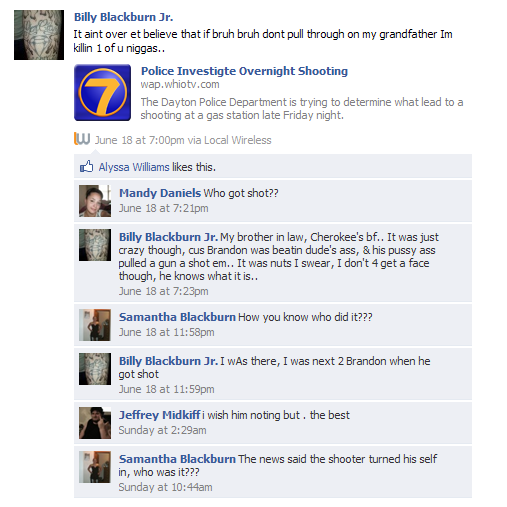Stay armed, stay alert, stay safe! -Gun Guy
Published with Blogger-droid v1.7.4
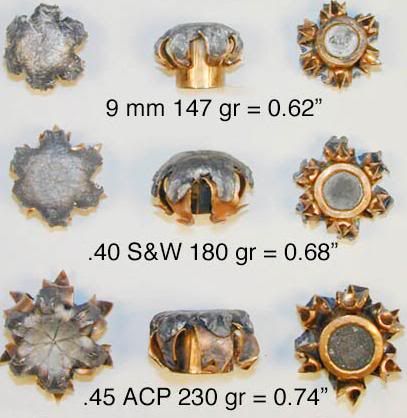
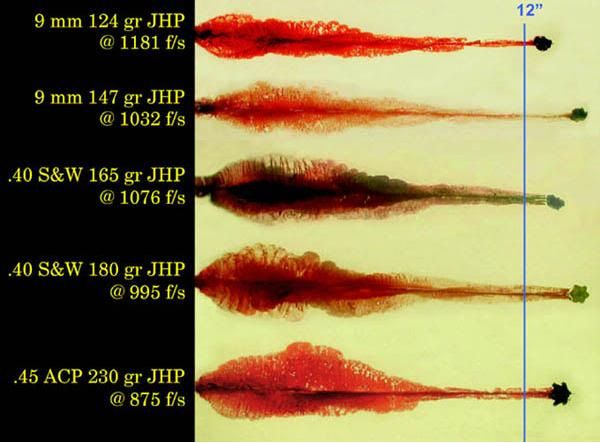

The Prevention, Response and Mitigation of School Shootings
by Greg Ellifritz on Friday, September 16, 2011 at 5:44am
These are my notes from a class was taught by Kenneth Hughes, a retired police chief from Forest Park, Ohio and an expert in school shootings. It was a 3-day class hosted by the Ohio Peace Officers Training Academy and was very well done. Most of the learning points below are from this class, but have been supplemented by my personal experiences and knowledge from other resources when appropriate.
- School shooters are influenced by past events. They study and learn from the successes and failures of past shooters. Parents, teachers, and students should also be familiar with past shooting events so that they can better prepare for future incidents.
- School shooters generally choose times when people are moving to start shooting. They shoot at the beginning of the day, during open lunch periods, at the end of the day and between classes. Most schools don’t practice lockdown or evacuation drills between classes or during lunch periods because they are difficult to coordinate. Schools should challenge themselves by conducting lockdown drills during these chaotic times.
- Infamy has become a prime motivator for school shooters. Many shooters recognize that they will be captured or killed and want to “live on” through their body count. They will create written “manifestos” and YouTube “training videos”. Occasionally those publications and videos will be released before the shooting actually happens and should be something that police, parents, and school officials must be aware of.
- School shooters are mostly white, non-urban, and victims of bullying, assault, or intimidation. There is no other useful physical “profile”. Most school shooters were known to have difficulty coping with significant losses or personal failures. Most also had easy access to weapons.
- Children are not taught about how to use cover and concealment. In school shootings, children will often run to the police in search of assistance. Unfortunately, the police are the ones drawing gunfire from the shooter(s). There have also been shootings (Norway is one example) where the shooters have impersonated police officers.
Police need to learn techniques to distance themselves from students and draw fire away from them. Students need to learn what materials can stop bullets and how to seek cover. They also need to be trained to stay away from the police in a shooting situation.
Let your children know that a backpack loaded with school books is likely to stop handgun bullets. If your child has a backpack loaded with a couple of books, instruct him to put it on (in front of the body if necessary) between himself and the shooter as improvised body armor. Better yet, outfit your child’s backpack with armor panels from old bullet resistant vests purchased cheaply on EBay. Even if the vest panel is expired, I’ve never had one fail to stop a bullet that it’s rated to stop despite the panel’s age. I’ve shot vest panels as old as 25 years and they still work. As long as the panel has not been submerged in water or left out in the sun for extensive time periods, it will still work.
- People who haven’t thought about safe areas run AWAY from danger during shootings. They end up in sub-optimal positions like hiding under beds or locking themselves in bathroom stalls. In the event of gunfire, people should run TOWARD safety, preferably pre-identified hard cover.
- Precursor homicides are not unusual with school shootings. The shooters will occasionally kill a family member before going to the school for the attack. The shootings in Bethel, AK and Thurston, OR; and Red Lake, MN are some of the more famous examples. If homicides are discovered by police and teenage family members are not accounted for, the school that the teenager attends should be secured.
- Many school shooters use rifles to commit their crimes. The general public doesn’t understand the range of an average rifle and won’t understand how far they need to evacuate. The instructor suggests that when training the non-shooting public, we should inform them that a scope sighted rifle is dangerous out to 1000 yards and a non-scoped rifle is dangerous out to 300 yards. The information may not be 100% accurate but is a good guideline to start with. Do you know how far away 1000 yards is from any side of your child's school?
- Kip Kinkel had over 1100 rounds on his person during his shooting at Thurston High School. Cho had over 800 unfired rounds on his person when he died at Virginia Tech. Thomas Hamilton had 743 rounds on his person when he shot up a school in Dunblane Scotland. School shooters are researching past shootings and planning to exceed the body counts of their predecessors. They are doing better jobs planning their assaults than schools and police are doing planning their responses.
- One opportunity for school shootings (that hasn’t occurred yet) is during a planned fire drill. Every school has fire drills once a month and they are often pre-planned. Does your child’s school have a plan to deal with a shooter who is shooting at students who have amassed outside waiting for the “all clear” signal during a fire drill?
- Several shootings have been stopped when the shooter has been calmly confronted by another student or teacher telling him to stop shooting. While it probably shouldn’t be a person’s first choice of tactics (escaping or fighting will generally have better results), it can work when potential victims have no other options. Some teachers and students don’t have the temperament to fight back or lack the physical ability to escape. Train those people to talk. Telling the shooter: “Stop shooting. That’s enough for today. Put the gun down” may work and is a better strategy than hiding under a desk.
- Many school shooters are physically stopped by their potential victims while the shooter has a gun malfunction or is in the act of reloading. Students and teachers should be trained in basic firearms operation specifically how to recognize when a shooter has a malfunction or is in the act of reloading.
- With the increase in numbers of School Resource Officers (police officers assigned to a school, also called SROs), most recent school shooters are taking their presence into account. School shooters are wearing body armor and helmets (anticipating armed resistance), scheduling their attacks when the officers are on a lunch break, or targeting the officer as their first act. School resource officers do not operate in a “safe” environment when they are forced to respond to killers armed with long guns, body armor and explosives. SROs must be armed, trained, and have access to rifles.
- The recent school shootings at the Platte Canyon High School, the West Nickel Mine Amish School, and Virginia Tech all involved the shooter using some method to barricade doors. This both slows law enforcement response and limits the victims’ opportunities for escape. This should be a warning sign that teachers, students and cops should look for. If you see a student carrying chains, locks, zip ties, handcuffs or any type of lumber at school, you should immediately call the police and trigger a lockdown or evacuation procedure. Patrol officers should be trained to breech barricades and have the equipment needed to do that.
- In most active shooter events, the paramedics and EMS will not make entry, even after the incident is over. Police and uninjured victims will need to carry the victims to a casualty collection point outside of the building. Most gunshot injuries will not be aggravated by moving the victim. The leading cause of preventable death in a battlefield environment is uncontrolled bleeding. BE PREPARED TO CARRY THE VICTIMS OUT! Don’t allow victims to bleed to death waiting for the paramedics to respond.
- In Virginia Tech, the student victims of the shooting used vastly different survival strategies. Students in room 206 were quiet and played dead. This initially (after the first wave of shooting) worked, until Cho figured out that people were still alive and went back and shot all the people laying on the floor. He made two additional trips back into the room to shoot the students laying on the floor. Everyone was shot. All but three died.
In room 204, a professor (a former Israeli soldier) held the door closed and ordered the students to jump out of the second story window. All of the students who jumped survived (although 6 out of the 10 were injured). The professor was eventually killed and all the students who didn’t jump were shot.
In room 205, the students barricaded the door securely with tables (the doors opened inward). Cho could not get in. Even though Cho shot through the door, no one was hit. Not a single person was injured in that room.
Two students were shot, fled downstairs and entered an empty classroom. They wrote the word “Wounded” on a piece of paper and taped it up over the classroom window, waiting for help. Even though it was the first floor and they could have escaped out a door or window, they didn’t. They hid and waited for help. Luckily they weren’t shot again. Two other students hid in an unlocked bathroom stall. If the police hadn’t arrived as soon as they did (forcing Cho to kill himself), both of these groups of students would have likely been killed. Unless one has preplanned a response, irrational actions like this are common.
- Hiding under desks does not keep people safe. It didn’t work in Columbine and it didn’t work at Virginia Tech. Desks generally don’t stop bullets. If your active shooter plan involves hiding under desks for protection, you need to reconsider your options.
- In Virginia Tech, students rationalized the sounds of gunfire as construction noises. Students in Columbine initially thought the gunfire was caused by firecrackers being lit as a student prank. The students at Beslan thought balloons were popping. Students and teachers in shooting events universally express the thought that “I couldn’t believe it was happening”. This denial and rationalization leads to a paralysis. The waiting for verification of actual gunfire takes time that can better be used doing other things.
If you are in a school and think you hear gunfire, don’t wait. Don’t delay while trying to figure out what’s happening. If you think it’s gunfire, ACT! Immediately barricade the doors or escape. The people in active shooter events who wait around to be sure that the noises they are hearing are actually gunfire typically delay so long that they no longer have any viable options.
- “Playing dead is not an option unless there are NO other options.”
- 99.5% of school shooters told at least on other student about their plans for the attack before they acted. Harvard University did a study to determine why the students who knew about the shooting plans didn’t tell the authorities. The students reported that they didn’t believe that the shooter would actually follow through with the plan. Teach your children to report anyone who talks about planning a school shooting.
- Communication is one key to successful resolution of a school shooting event. It has been a serious problem in the past. The instructor suggested giving select school officials a police radio and teaching them how to use it so that they can have direct communication with the police in an emergency. He also suggested that police and fire dispatchers be given a direct call number to school officials so that the dispatcher doesn’t have to go through secretaries or “phone trees” in an emergency.
Another important communication technique is the police/fire “Reverse 911” system. During a school shooting, reverse 911 calls should be made to the community instructing parents how and where to respond. Parents will want to do something and if they aren’t given logical alternatives, they will respond to the scene and complicate emergency response. Schools should create an alternate emergency release plan that involves transporting unaffected students to a safe location for release. The parents need to know where this location is and how to pick up their children.
- Check on your school’s utility access. Make sure students don’t have access to power controls. There have been several averted school shootings where shooters had planned to initiate the attack by cutting off power and phones to the school. This would limit communication, deactivate alarms, and alter the function of electrically controlled doors. In addition it will cause great confusion among the shooters victims and make emergency response much more difficult.
- Many school doors cannot be locked from the inside. If they have commercial door handles that are move downward on both the inside and outside simultaneously, they can be blocked on the inside which prevents someone outside from opening the door. A 2x4 with one end cut into a “u-shape” and wedged under the inside door latch can cheaply and easily secure the door from the inside.
- Schools should have better door and window numbering systems. Numbers should be on the outside AND INSIDE of every classroom door and window. All exterior doors should also be numbered. If students are locked down in a certain room, they need to be able to easily see the room number (from the inside), so they can better direct emergency responders to help them. Cops and firemen can also use room numbers written outside of windows to identify alternate entry/exit points.
- Every school classroom should have a survival kit. The kit needs to have different supplies depending on the age and needs of the students. All kits should contain resources to barricade doors (wedges, ropes, etc), paper and writing instruments to communicate silently both within the classroom and with emergency responders outside, medical supplies suitable for treating gunshot wounds (bandages and tourniquets), and alternate communication devices (cell phones or radios). Having food, water, and entertainment options (for younger children) are also useful. A strong flashlight and dust masks are also useful items to have in the kit in case of a power outage or if the shooter is also using explosives. Smoke, dust and darkness are very common in more extended school shootings.
If the classroom has a drywall wall separating it from another classroom or hallway, consider adding a razor knife, hammer, or small hatchet to the emergency kit. These items will allow you to cut through the drywall to create an alternate escape route. Have a method to break window glass to facilitate escape as well. Glass breaking window punches are available for sale online for around $5.
If the classroom is on the second or third floor and has a window, adding ropes, rope ladders or some alternate method of safely lowering students from the window to the survival kit is essential.
- On lockdowns, students and teachers should place desks, chairs and furniture in the pathway of the potential shooter to slow his entry into the room
- The idea that school shooters are always trying to “get even” with people that have bullied them is not accurate. Killers have initiated shooting events by targeting certain individuals, but generally they generally soon move on to the school’s population as a whole. In Columbine, one of the first victims was a student with Down’s syndrome who had never bullied anyone.
- The Beslan school massacres ended with over 700 injured people (not counting the 331 dead). What American police or fire department has the ability to handle a mass casualty event of this size? If terrorists conduct a similar takeover here, we likely wouldn’t be any better able to respond than the Russians were.
- Lockdowns are generally helpful if the school is located in an area with a rapidly responding police force. It provides temporary marginal protection and denies some areas to potential shooters. Lockdown, however, is not the only answer. Some shooters will exploit lockdowns to facilitate their aims. The shooter in Red Lake MN killed a security guard purposely to trigger a lockdown. He wanted the lockdown so that he could easily find and target the victims he wanted to kill. After the lockdown was triggered, he went to the classroom where he knew his victim would be hiding, shot a hole in the glass window of the door and entered the locked down room. He then killed the teacher and 5 students before he was shot by police.
The lockdown does have a deterrent and area denial effect, but it will not stop a determined shooter.
- Upon review of many school shooting events, I noticed that the majority of school shooters carry extra firearms, ammunition, or explosives in backpacks or duffle bags. This seems to happen over and over again. Although backpacks are a common sight in schools, people should pay attention to students or other people carrying backpacks that don’t fit the environment. If the packs seem larger than normal, much heavier than average, or carried in a manner inconsistent with the way other students are carrying them, it might be a valuable early warning sign. A school policy that limits the carrying of backpacks between classes would help to more easily identify students who are carrying weapons and ammunition.
- In longer term school shooter events (lasting several hours like Case Western or Beslan), the closed circuit TV cameras in the schools will be incredibly valuable in terms of locating the shooter. Oftentimes police don’t think about utilizing this resource. It is a good idea to pre- identify the location where the video monitors are located and who can show officers how to monitor the cameras in any school and have that information available to responding officers.
If teachers or administrators can see the shooter via closed circuit TV before police arrival, they can use the school PA system to direct police to the shooter’s location. They can also yell verbal commands to the shooter using the same PA system. Imagine the impact a voice over the PA system could have on a shooter if the voice is saying “We know where you are. We can see you in front of room 242. It’s over. Set the gun down. The police are here, etc.” The use of the building PA system is an underutilized resource in school shootings.
- In early school shootings, the shooter would kill himself after shooting a number of people. More recent shootings haven’t followed this trend. The most recent trend is that shooters plan to engage police or citizens in gunfights and continue to kill people until they are wounded. It is only after they are wounded that they kill themselves.
- Active shooter events in schools are not isolated to the United States. In fact, Canadian police were the first worldwide to develop an active shooter response strategy. In addition to Canada, school shooting incidents have been reported in Israel, Germany, Finland, Scotland, and Brazil. Even Chinese schools have experienced school violence with multiple knife homicides.
- With few exceptions, the shooters don’t have an escape plan. They will continue to kill until they encounter effective resistance.
- The latest trends of active shooters worldwide involve the use of explosives, both as distractions and as methods to enhance body counts. Cops, students, and educators need to be better prepared to recognize and deal with bombs.
- Technology will be an increasing factor in future active shooter events. Besides the increasing use of the internet as a training tool to research past events and weapon construction, terrorists are employing cell phones and media outlets to stay one step ahead of the police while the shooting incidents are taking place.
- Resources the instructor suggests you should study in order to better understand the phenomenon of school shootings:
- “Shooter Down”- a book about the Virginia Tech shootings by John Giduck
- “Terror at Beslan”- a book about the Beslan Russia school terrorist massacre by John Giduck
-“The Children of Beslan”- a BBC news documentary of the Beslan event
- “Elephant”- a fictional movie about the planning of a school shooting
- “I Choose to be Happy”- a book about the Paducah Kentucky shooting written by Missy Jenkins
- “Nineteen Minutes”- a fictional account of the planning of a school shooting by Jodi Picoult
- “Zero Day”- a fictional movie based on the details of several actual school shootings
- “A Columbine Survivor’s Story” by Marjorie and Peggy Lindholm
If you have any questions or comments, please feel free to share them here or via email at Greg1095@yahoo.com
Security has notified us of the following information:
At approximately 8:45 AM this morning, two REMOVED employees were robbed at gunpoint. The employees left the REMOVED campus on their break and were sitting in an SUV, which was parked off-campus along a side street, approximately two blocks away. While on their break, a young man in his twenties approached the car, robbed them at gunpoint and then fled. The employees returned to campus and reported the incident. No one was physically injured. The REMOVED Police and REMOVED Police Departments are investigating the crime.
The Department of Protective Services would like to remind all employees to always observe the following safety practices:
*
Be aware of your surroundings at all times.
*
If for some reason you find that you need to park/stop off-campus, always try to stop in a busy, well-lit area with clear lines of sight.
*
Take advantage of the secure and convenient parking provided at all REMOVED locations.
*
If you see something that seems suspicious or out of place, immediately move to a safe area and report it, whether it is on or off-campus.
The REMOVED Police Department is available to help 24 x 7

PUBLISHED HERE WITH AUTHOR PERMISSION









The notification law fails everybody. Ohio should follow the lead of some other states and require officers to ask if there is a legal gun in the car, rather than requiring the driver to say it first.
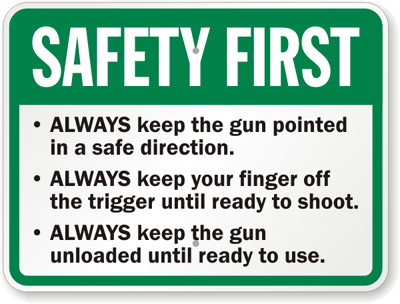
About:
Chief Dean McKimm
General Information:
Officers of the Canton Police Department abide by six major guiding principles. They are as follows:
1.To be a progressive, proactive organization, dedicated to safety and serving the needs of the community.
2.To be responsive and accountable to the citizens of Canton through the chain of command and the city's administration.
3.To promote the professional and personal growth of each employee throug...h strong, fair, flexible leadership.
4.To create an environment in which employees can attain the highest degree of creativity, productivity and sense of morale.
5.To maintain a spirit of cooperation within the department and between Labor Unions and other representative organizations.
6.To be fair, honest and display common sense in all actions.See More
Mission
The mission of the Canton Police Department is to protect the lives and properties of the citizens of Canton, enforce all city, state, and federal laws, prevent crime, and educate the public.
We, the men and women of the Canton Police Department, shall perform these duties with honesty and fairness through strong leadership and continuous training. We will strive to serve as role models for the community, applying professional standards and commitment to integrity, sensitivity and compassion to those we serve.
GOProud's executive director, Jimmy LaSalvia, says he was violently attacked for being gay and that the experience has only strengthened his pro-gun beliefs.
Just as I got up to them, the assailant lunged off the sidewalk toward me and delivered a punch across my chest. The momentum of my bicycling drove me into his fist and arm, causing a shocking pain like I’ve never felt before. Just as I began to realize what was happening, I heard it. The words are still ringing in my ears as I write this — “Fucking faggot!”
So I kept my hand in my backpack, allowing them to wonder whether I was reaching for a gun. Then a couple of them started to run away, and the others soon followed. I got back on my bike and pedaled as fast as I could out of there.
When I got home, I began to reflect on what had happened, and more disturbingly what could have happened. I am in contact with the LGBT unit of the police department to file a report. But I’ve thought a lot about the turning point of the situation — the fact that one of them thought that I might have a gun. None of them said, “There’s a law against antigay hate crimes!” That wasn’t the deterrent. It was the possibility that I might have had a gun that saved my life Friday night.
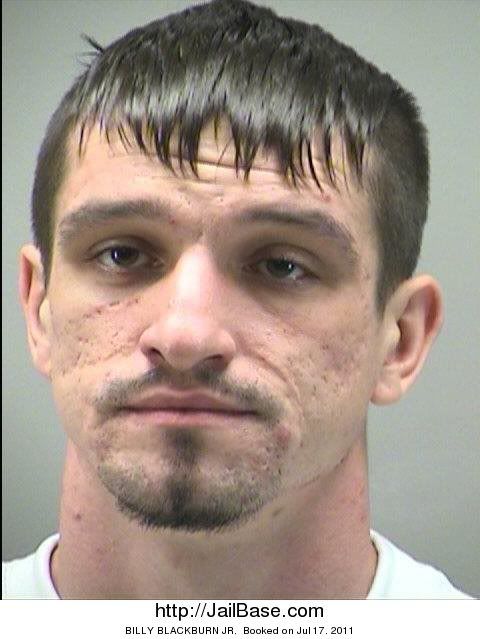

 and shows a photo of the wound. I could barely understand his language but he admits he is going to seek vengence.
and shows a photo of the wound. I could barely understand his language but he admits he is going to seek vengence.